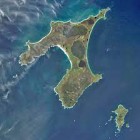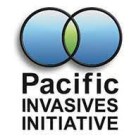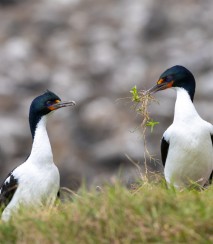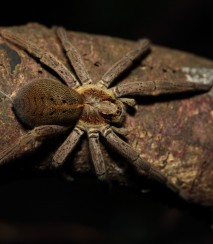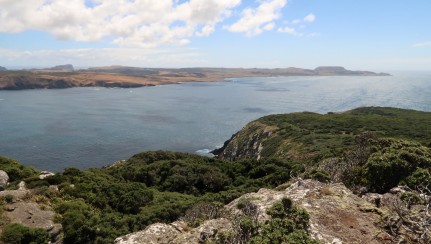
Predator Free Chathams
Predator Free Chathams is a community-driven conservation programme to help restore our islands’ natural gifts, for now and for the future.
One of the biggest challenges our native species face is introduced predators. Our species evolved in a world without mammalian predators, which is what makes them unique but also poorly equipped to face introduced predators. This has flow-on effects to the wider ecosystems that, ultimately, all of us are part of and depend on.
Our long-term goal is to remove three key predators from our islands: possums, rats, and feral cats. Efforts on Rēkohu/Wharekauri are focussed on eliminating all three species; on Pitt Island, we will continue removing feral cats. This ambitious goal will require a lot of resources upfront, but the long-term benefits for our islands and our people make it worth it.
An eradication of key predators in the Chatham Islands could protect more endangered species than anywhere in Aotearoa. The islands are home to nearly 10% of the country's threatened and at-risk species.
Predator Free Chathams is a key part of the Trust's strategy to help restore nature's gifts to the Chatham Islands. It's also part of the Chatham Islands' Investment Strategy 24-28.
What makes restoring the Chathams unique?
- The Chatham Rise is the most productive ocean region in New Zealand due to the subtropical convergence. It’s been estimated around 70 seabird species use these waters for foraging, breeding, or migrations – around 20% of the world’s seabird species. Restoring these islands will have global significance for seabirds, including albatrosses.
- With 326 of Aotearoa’s endangered species on the Chatham Islands (about 10%), removing introduced predators could protect more endangered species than anywhere else in the country.
- The Chathams are 800km away from the mainland, making it easier to keep predators out once they're removed.
- The geography of the islands also means we can carry out an eradication in segments, taking advantage of natural defendable borders like the lagoon.
- One of the most challenging predator types – mustelids (ferrets, stoats and weasels) – isn't present in the Chathams. Pitt Island is also free of possums and rats.
- Our community has a history of conservation action and success, and are already involved in predator control and restoration on the islands. Predator Free Chathams is part of the Chatham Islands Investment Strategy 24-28. Much of the two main islands on the Chathams are privately owned.
Much of the Chathams is privately owned, with landowners and a community supportive of restoration. However, life on the islands can be tough and large-scale restoration and predator removal takes a lot of resource. Securing funds for a project encompassing so much private land can be a challenge.
Be part of restoring our islands
A team effort
This is a community-led programme, so the Trust works closely with members of our community to shape and deliver the work. We're also teamed up with Predator Free 2050 Limited and the Department of Conservation, who provide us with expertise, advice, materials, and other resources.
The Chatham Islands have also joined the Island-Ocean Connection Challenge, which connects our islands with international donors and links us with a global network of island restoration expertise.
Other restoration projects play a complementary and essential part in restoring our islands. Alongside managing predators, work like plantings, biosecurity, other restoration measures, and sustainable approaches are essential. Thankfully, our community are already doing some of this and our Trust supports a wide range of projects.
The PF Chathams Plan
Given the huge scale of Predator Free Chathams, we’re taking a staged approach. We’ve divided Rēkohu/Wharekauri into three phase areas, starting our work in the northeast of the island. We’re treating this phase like a pilot; what we learn will inform future phases. On Pitt Island, we’ll be continuing work started by our community to remove feral cats. This project has recently been added to the Predator Free Chathams umbrella, and we’re still scoping what this looks like with our local community.
We're using the Pacific Invasives Initiatives best practice resource kit to help develop our eradication project. This includes developing the stages of our project using their Project Process.
Phase One of Removing Predators
Our first phase on Rēkohu/Wharekauri focuses on the northeast of the island (pictured yellow in the map). This encompasses a mix of habitats - forest remnants, wetlands, fresh water lakes, sandy beaches, and rocky shores - as well as the Kaingaroa community, and some areas of cultural significance.
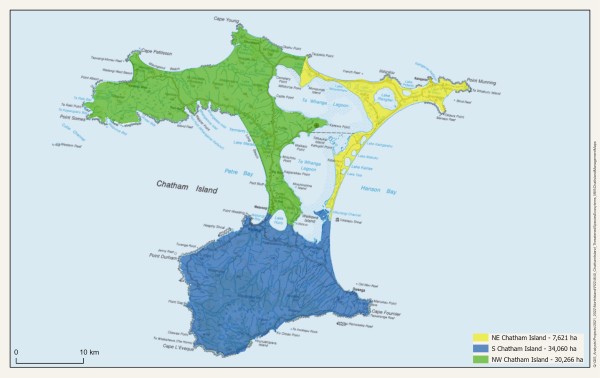
Predator Free Chathams sector map
As part of the planning process, we commissioned a Feasibility Study for the northeast sector in 2022. We will continue to refine aspects of this study drawing on expert advice as our project progresses.
We are creating a network of 97 AT220 traps in the area, making use of natural choke points and the buffer created by Te Whanga lagoon to help prevent reinvasion. The community is involved in keeping this network running.
Read the 2022 northeast Feasibility Study

